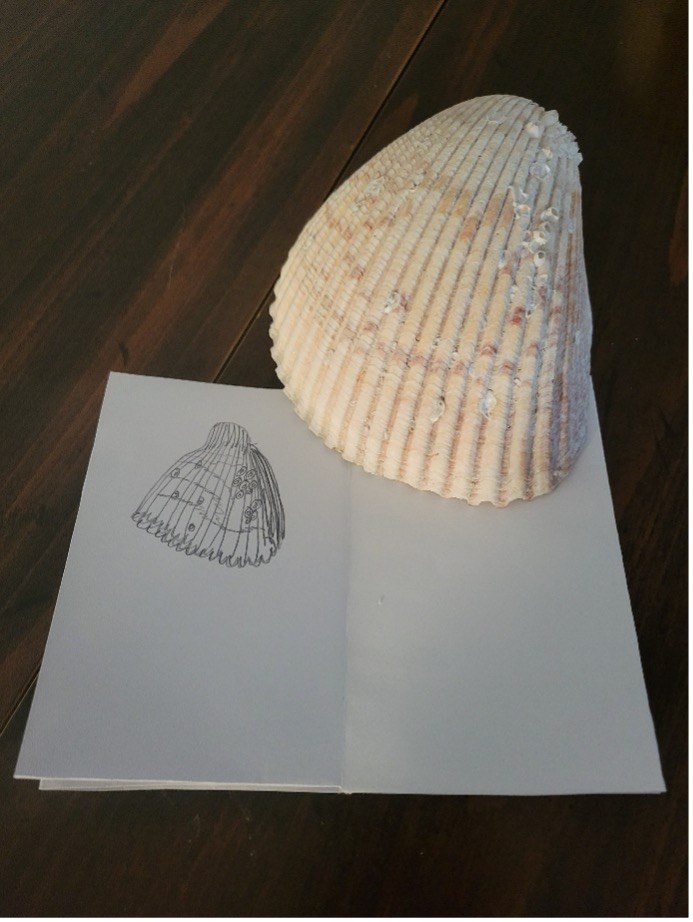Posted: April 17, 2025
That’s what some learners asked as they completed the “Nature Sketching Builds Strong Observation Skills” course. Others, particularly those working with toddlers and infants, occasionally remarked something like “Sketching doesn’t help my age group. I work with infants.”

A shell next to a drawing of it on paper.
Here’s the answer: It has EVERYTHING to do with child care! And it CAN help infant caregivers. The very best educators and caregivers are keen observers. They notice patterns, nuances, and connections. They watch children and pick up on interests, developmental delays, and temperament preferences. Is this something that can be developed so that all people have the chance to be excellent caregivers? YES.
The more people train their brains to focus, the more adept they become at observing. And this doesn’t only have to happen during childcare times. This development of observation skills can happen during other enjoyable tasks, like nature or art observations and sketching.
There are multi-purpose goals of the nature sketching course.
- Provide educators with an experience in mindfulness, allowing them to experience greater relaxation and unwinding. This can be repeated within their own schedules to de-stress in the future.
- Hone observation skills during nature sketching experiences so that when transferred to observing children, those observations are more detailed and exact; that documentation of the child observations is richer and easier to do.
- Provide developmental examples of how similar self-regulation, mark-making, and observation skills can be nurtured in children from a young age—yes, infancy through adulthood. Infants are not expected to be certified botanical artists, but they can be invited to deeply notice. They can be invited to make marks. In time and with repeated practice, children’s observational sketches can be quite detailed and can reveal to an adult key information about their ideas and observations.
And for those of you who wonder if we are looking at responses, we are! We don’t have the capacity to read all the comments or to regularly reply to individuals. But the course authors learn and make design and content changes in future work based on the effectiveness and impact of current courses and the feedback learners provide.
If you haven’t yet treated yourself to the “Nature Sketching Builds Strong Observation Skills” course, consider doing so. Like most of our courses, this course uses the Know-See-Do-Improve (KSDI) learning framework. There are sketching activities built into the course, so this is best completed when the learner has a drawing surface and time to try out the exercises that the instructor describes. Working through the course on a phone on a bus on the way home from work might seem efficient but won’t allow the learner to get the full effect of implementing the observation skills and seeing the relevance to ECE/OST work.

